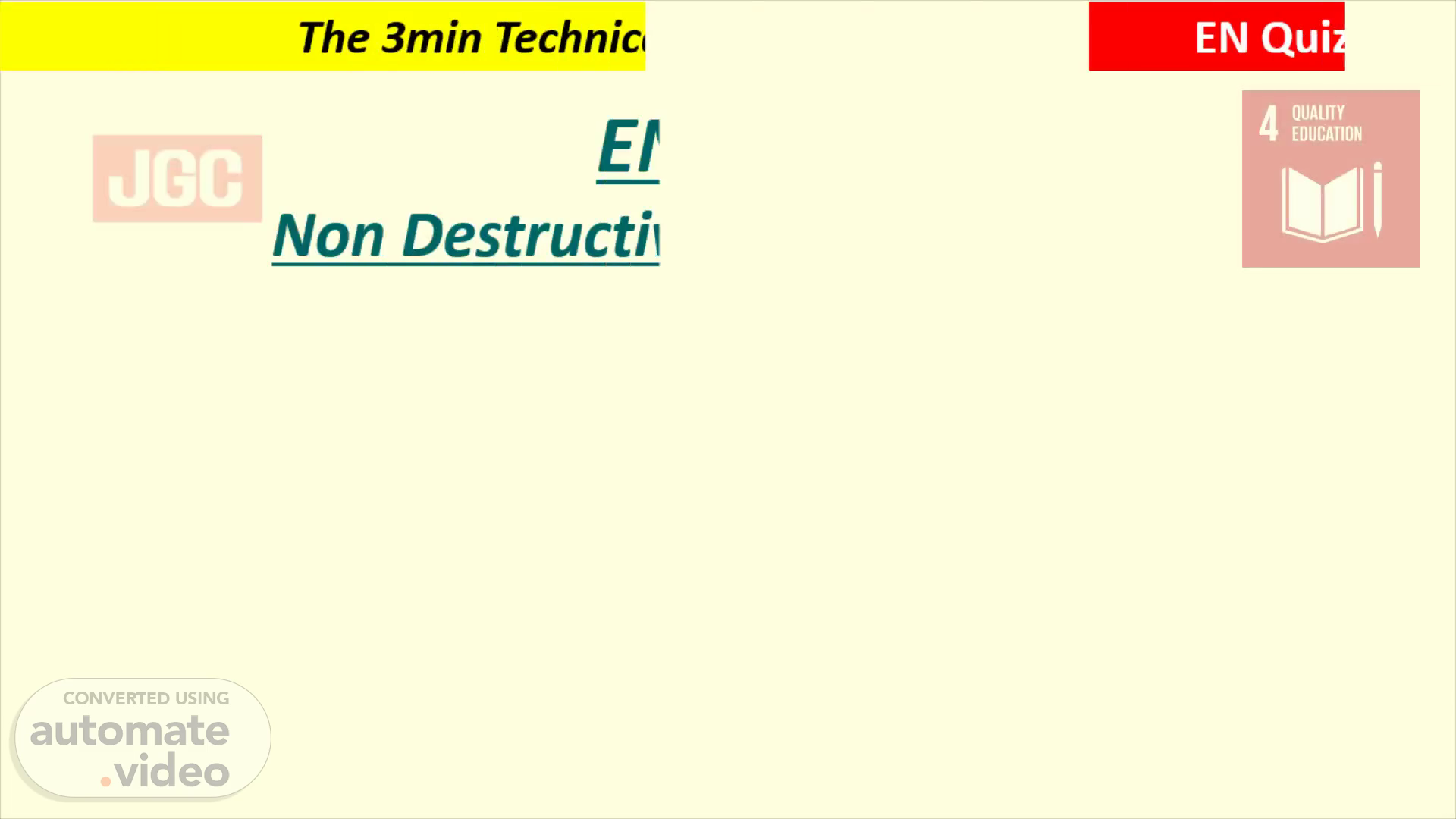
PowerPoint プレゼンテーション
Scene 1 (0s)
The 3min Technical Topic. EN Quiz. EN Quiz Non Destructive Test fo r concrete.
Scene 2 (12s)
What is Non Destructive Test for concrete. It is a testing method used to determine potential concrete defect such as honeycomb, cavities and void inside concrete without causing damage to the existing concrete structure..
Scene 3 (42s)
Ultrasonic Pulse Velocity (UPV). This test is conducted by passing a pulse of ultrasonic through concrete to be tested and measuring the time taken by the pulse to get through the structure. Higher velocities indicate good quality and continuity of material while slower velocities may indicate concrete with cracks and void..
Scene 4 (1m 9s)
2. Ultrasonic Pulse Echo Test. This test is more precise and more detailed testing if required needed. The test principle is based on Ultrasonic waves that transmitted to structure. The transmitted wave beam is reflected within the play and the flaws, the return to the flaw that can be both transmitter and receiver. Positioning fault is done by interpreting the signal..
Scene 5 (1m 38s)
3. Ground Penetrating Radar (GPR). The GPR system consist of a transmitter, a receiver and a computer for data acquisition and control..
Scene 6 (2m 28s)
UPV Test Ultrasonic Pulse Echo Test GPR. Q : From above three method, which is the best method to conduct NDE for big area such as concrete floor slab?.
Scene 7 (2m 41s)
B. GPR Test. Because GPR can cover big area and also faster option compare to UPV and Pulse Echo Test, where for UPV and Pulse Echo test is only cost effective for smaller scale area/local area assessment..